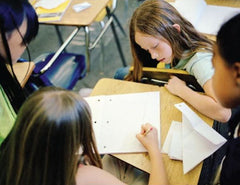Planning for Health Education: A Teacher’s Superpower
By Shonna Snyder, associate professor of Health, Sport, and Physical Education at Gardner-Webb University
APRIL 2021
Planning is possibly the most valuable tool a teacher can employ. I would argue that it is a superpower. Using planning will make the life of a teacher easier because students will learn more and will learn more easily.
Students will learn more if they enjoy the learning. When students enjoy learning, there are often fewer disruptions during the lesson and more engagement overall. Planning allows a teacher to make lessons fun, relevant, and engaging; as a result, student engagement increases. This makes the life of a teacher easier.
If a lesson is well planned, the teacher will have less stress. When instructional decisions have been made in advance, and assessments developed, a teacher can have confidence that they are well prepared to teach, and this results in reduced stress. When a teacher is less stressed, they can focus on developing relationships with students, attending to their developmental needs, and creating learning opportunities that they otherwise would not have time for.
Planning in the health education classroom is, in some ways, different than in other subject matter classrooms, yet in other ways it is the same. Health education is different because teachers focus on real-life matters, such as making a decision to get vaccinated for COVID-19, setting goals to eat healthy, and analyzing barriers to exercise. All of these have immediate and long-term impacts in a student’s life. Health education classrooms are the same as those for other subject areas because adolescents have questions, and they communicate with and have relationships with the teacher and with each other. Students bring life experiences to the classroom that often must be addressed when health topics are discussed. Teachers must be prepared for responding to students whose experiences and perspectives differ from their own. Planning ahead for these topics and differences in viewpoints will make a teacher’s life easier.
Core Teaching Practices for Health Education (Ward & Snyder, 2022) provides a practical approach for planning in a health education classroom and for making sense of the health education curriculum. The book suggests the use of big ideas, enduring understandings, and essential questions when planning lessons in order to create a meaningful, relevant, and engaging class that aligns instruction to the curriculum and to student needs. The text recommends ways to sequence health content, handle issues that arise, teach effectively, and assess learning. Some strategies suggested are to create a spiral curriculum and learning progressions, ask a lot of questions and use models in lessons, and provide ample opportunities for student practice and feedback. In essence, the book helps teachers use their planning superpower to ensure that they have adequately prepared for health education—making their life easier and helping students enjoy learning.

Shonna Snyder is an associate professor of Health, Sport, and Physical Education at Gardner-Webb University in Boiling Springs, NC. She is also co-author of Core Teaching Practices for Health Education. When she isn't teaching or writing guidance and policy documents that are used by SHAPE America and the National Association for Kinesiology in Higher Education, Shonna enjoys spending time on her farm gardening and playing with her German Shorthaired Pointers, Chase and Ray.

Latest Posts
- Supporting Mental Health through Movement
- Review of Promoting Elementary School Physical Activity
- Human Kinetics Acquires PE Central Online School
- School-Based Promotion of Children's Physical Activity
- Live Well: Middle School Health Correlations to National and State Standards
- Live Well: Reproductive and Sexual Health



